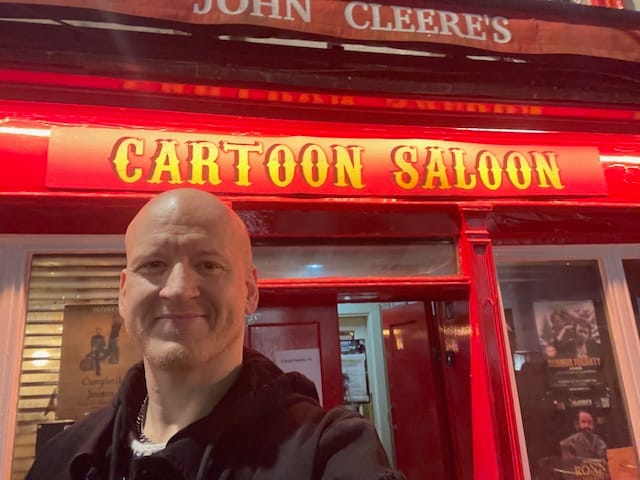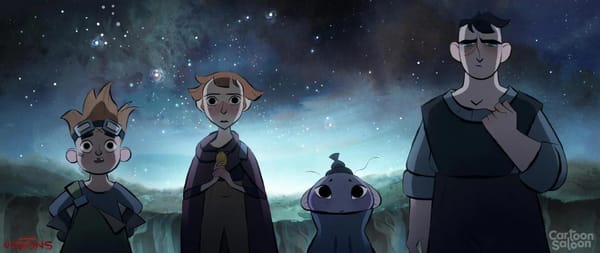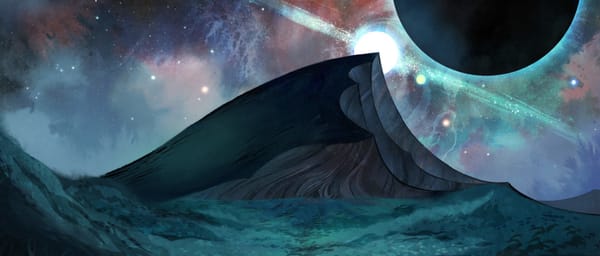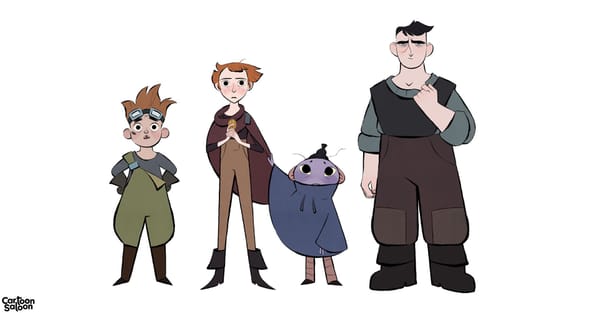Creative Producer? But what do you actually do?
Seriously, what is a creative producer? You're about to find out...

When people hear “producer”, their minds usually jump to budgets, schedules, spreadsheets. And sure, those are part of the job. But the word means very different things in different contexts: in television or film, whether the producer or a producer. Add the word “creative” in front and everything changes again.
In animation, and especially feature storytelling, the role can go so much deeper.
So what is it?
Well, sure, I am often across schedules and timelines, keeping a broader view on how we're doing and what's achievable, although I'm often leaning on the line producer and production crew to dive into the weeds. But I'm also shaping characters, breaking story beats, structuring an episode or a scene, weighing in on boards, reviewing and rewriting and sometimes kind of directing... without technically directing.
It is a leadership role and a support role all in one. Not quite writer, not quite director, but deeply responsible for both. Paving the way, while nurturing and elevating others to feel secure enough to pave their own. Sometimes it's a gentle nudge. On rarer occasions, a sledgehammer. On any given day, that simple title can mean very, very different things but I think it always comes back to that leadership and support combination.
To give a solid example...
I have recently been working on development of a television show. When I came on board, a concept was in place and scripts were in progress but it wasn't quite landing. The original designs were gorgeous and I could see the show in those designs, but not in the rest of the material. So I took it back to basics, working closely with the creator and a new writer to reshape the show to better reflect the soul of the original drawings. I led the process, shaping the creative direction but, really, I was supporting and guiding the creator and helping him and the team to get the absolute best from their work.
In another example, our Star Wars: Visions episode (which I'll talk more about here very soon), I came up with the core story and, through conception, design, boarding, all the way through to the end, I worked very closely with Will Collins (my amazing co-writer) and then with Paul Young, the director, to be his sounding board and advisor. I stayed close to the heart of the story at every stage, making sure we didn't lose it. Deep in story. Every emotional turn, character choice or shift, I'm there.
And here's the thing:
If you're doing the support part of that well, often, your creative involvement becomes invisible. The ambiguity of “producer” makes it even fuzzier. In animation, where collaboration is everything, authorship often gets beautifully blurred. Teams pull together. Ideas pass through many hands. That means the credits don’t always tell the full story and some titles require explanation (and as a side note, something I care about deeply as a producer is making sure my team is credited fairly and clearly for the work they do. Not always easy, but it matters).
What it also means is that there are many different forms of creative leadership and they don't always come with a title. On the show development I mentioned, I had my role, but the heart of the creative is with the show creator. And the writer is also a creative leader here. And the studios heads themselves.
Ownership of a story belongs to many people and that's exactly as it should be. But when everything else is in chaos, if you see someone managing to hold on to the shape of a story, that's a creative leader. Maybe that's you. Or maybe that's someone you want to nurture and support. Look out for it.
As this little place develops, I'll get more into the specifics of what it is to be a creative producer, how one can get there, and how it all ties into storytelling. And maybe a few things about how to lead the creative even when you're not technically leading the creative.




